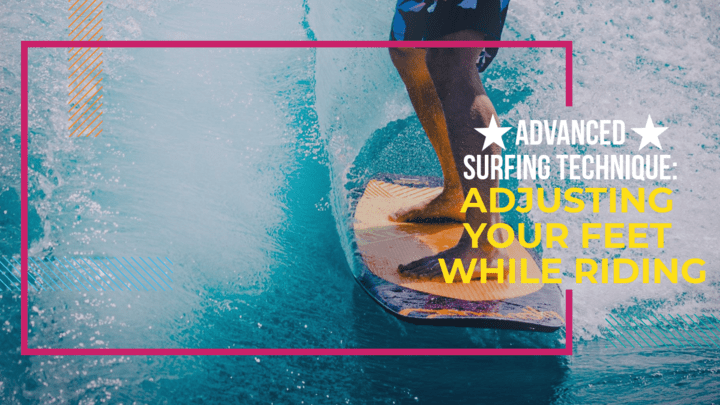If you watch advanced surfers closely, you will notice that they are continually shifting the position of their feet. Although every surfer has their style, and every board has its unique demands, advanced surfers tend to move their feet toward the nose of their boards to accelerate and toward the tail to maneuver. The chances are that they’re not consciously thinking much about these shifts anymore, although they almost certainly did as novices. And that’s where you are now. So be sure to start consciously honing your shifting skills so that one day you can optimize your ride automatically as the most skilled surfers do.
GETTING THE STARTING POSITION RIGHT
The general, default position that you always want to keep in mind has the front foot in the very center of your board, with your back foot roughly over the fins. This is the base that you start with, and return to, as you shift your feet forward and back to optimize your ride.
SHIFTING FORWARD FOR SPEED
Within certain limits, you can think of surfing as like driving, where your front foot is the accelerator, and your back foot is the brake. If you’re heading into a barrel or trying to gain momentum for an aerial maneuver, you need to maximize your speed. This requires shifting both feet forward toward the nose of your board. You may notice that when an advanced surfer is high and deep in a barrel, or racing laterally across the face of a fast-breaking wave, their front and back feet have moved forward to the point that they are roughly equidistant from the nose and tail. In this position, the entire body, rather than only the front foot, is centered over the middle of the board. While this is not a stable position for performing maneuvers, it allows you to stay in lockstep with the fastest wave sections and barrels.
SHIFTING BACK TO SLOW DOWN AND MANEUVER
You may have also noticed that when advanced surfers are about to perform a maneuver—such as a sharp bottom turn or roundhouse—they will shift their feet toward their board’s tail. The back foot is key here, as it serves as the anchor for your turn. Two changes take place at this moment: you slow down, and the board loosens up. As a result, turning becomes easier. As a rule, the more sudden the pivot, the further back you will go.
Overall, as you refine your skills, you will begin to shift your feet unconsciously and instinctively. Your feet will automatically plant themselves in the default, classic position at the beginning of your ride, with slight adjustments depending on the steepness of the wave. You will then shift your feet forward to accelerate into fast wave sections and barrels. Then, when you want to slow down and maneuver, you will automatically shift back towards the tail, loosening your board up for your big move. However, until second nature takes over and your feet find their sweet spots automatically, you will need to take conscious control of these shifts and refine them on every ride.
Need great surfing instruction, check out our available lessons.











